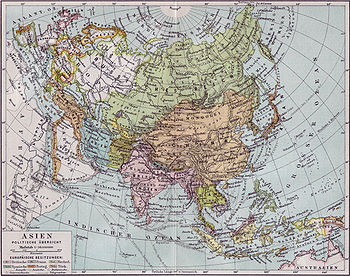Friday, September 4, 2009
The Khmer Republic and the War: 1970-1975
Posted on 2:13 AM by Nana
In March 1970, while Prince Sihanouk was absent, General Lon Nol deposed Prince Sihanouk in a coup d'état which, contrary to common belief, was not planned by the CIA. Lon Nol assumed the power after the military coup and allied Cambodia with the United States. Son Ngoc Thanh announced his support for the new government. On October 9, the Cambodian monarchy was abolished, and the country was renamed the Khmer Republic.
Hanoi rejected the new republic's request for the withdrawal of NVA troops. 2,000–4,000 Cambodians who had gone to North Vietnam in 1954 reentered Cambodia, backed by North Vietnamese soldiers. In response, the United States moved to provide material assistance to the new government's armed forces, which were engaged against both CPK insurgents and NVA forces.
In April 1970, US President Nixon announced to the American public that US and South Vietnamese ground forces had entered Cambodia in a campaign aimed at destroying NVA base areas in Cambodia (see Cambodian Incursion). The US had already been bombing Cambodia for well over a year by that point.
Although a considerable quantity of equipment was seized or destroyed by US and South Vietnamese forces, containment of North Vietnamese forces proved elusive. The North Vietnamese moved deeper into Cambodia to avoid US and South Vietnamese raids. NVA units overran many Cambodian army positions while the CPK expanded their small-scale attacks on lines of communication.
The Khmer Republic's leadership was plagued by disunity among its three principal figures: Lon Nol, Sihanouk's cousin Sirik Matak, and National Assembly leader In Tam. Lon Nol remained in power in part because none of the others were prepared to take his place. In 1972, a constitution was adopted, a parliament elected, and Lon Nol became president. But disunity, the problems of transforming a 30,000-man army into a national combat force of more than 200,000 men, and spreading corruption weakened the civilian administration and army.
The Communist insurgency inside Cambodia continued to grow, aided by supplies and military support from North Vietnam. Pol Pot and Ieng Sary asserted their dominance over the Vietnamese-trained communists, many of whom were purged. At the same time, the Communist Party of Kampuchea forces became stronger and more independent of their Vietnamese patrons. By 1973, the CPK were fighting battles against government forces with little or no North Vietnamese troop support, and they controlled nearly 60% of Cambodia's territory and 25% of its population.
The government made three unsuccessful attempts to enter into negotiations with the insurgents, but by 1974, the CPK were operating openly as divisions, and some of the NVA combat forces had moved into South Vietnam. Lon Nol's control was reduced to small enclaves around the cities and main transportation routes. More than 2 million refugees from the war lived in Phnom Penh and other cities.
On New Year's Day 1975, Communist troops launched an offensive which, in 117 days of the hardest fighting of the war, collapsed the Khmer Republic. Simultaneous attacks around the perimeter of Phnom Penh pinned down Republican forces, while other CPK units overran fire bases controlling the vital lower Mekong resupply route. A US-funded airlift of ammunition and rice ended when Congress refused additional aid for Cambodia. The Lon Nol government in Phnom Penh surrendered on April 17–5 days after the US mission evacuated Cambodia.
Subscribe to:
Post Comments (Atom)

No Response to "The Khmer Republic and the War: 1970-1975"
Leave A Reply